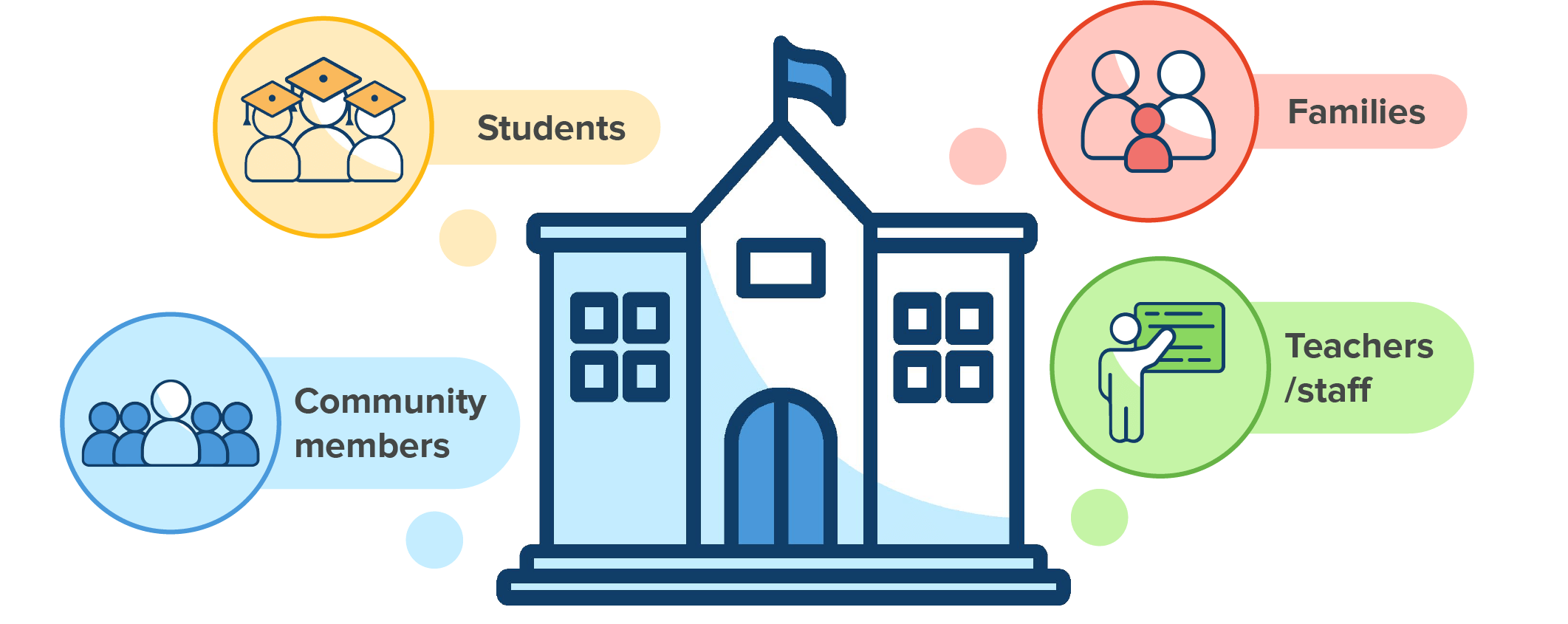
How to measure what matters: a data-driven approach for monitoring school climate
School climate and student achievement matter, and everyone who interacts with your district deserves a seamless experience.
In many districts, this is executed through parent nights, field trips, staff professional development, learning communities, and restructured behavior interventions. It might even mean changing school days and hours.
But through our decade of expert-led research into K-12 school climate and customer service, we’ve found most districts aren’t tracking whether these well-intentioned efforts are actually making any improvements.
In our recent webinar “Measure What Matters: A Data-Driven Approach for Monitoring School Climate,” our team at K12 Insight shared key highlights from the Q4 2023 National Report on Customer Service in Schools along with best practices for measuring and monitoring school climate and customer service. Here’s a look at what the webinar explored.
What is school climate?
School climate, also known as school quality or school culture, is the overall environment of a school, inclusive of the experiences of the students, teachers and staff, administrators, and parents and guardians who belong to that school community.

Maintaining a positive school climate is critical to a district’s success, and is associated with the following key benefits:
- Higher academic achievement in students
- Improved student motivation and overall satisfaction
- Fewer behavior-related issues and a decrease in bullying
- Improved employee engagement and reduced staff turnover
- Increased parent satisfaction and involvement
To learn more about improving school climate and how you can experience these benefits in your own district, download K12 Insight’s Q4 2023 National Report on Customer Service to discover the Five Key Dimensions of School Climate.
How can implementing a customer service strategy improve school climate?
Research by K12 Insight found parents who are dissatisfied with their schools are four times more likely to consider switching school districts than those who are satisfied.
To enhance school climate, a focus on customer service must be established that ensures school districts prioritize relationships and effective communication with students, families, staff, and community members. An intentional customer service strategy fosters communication, transparency, respect, and trust — all of which are needed to develop strong and meaningful relationships and directly contribute to school climate.
Check out this blog post for further reading on the three pillars of customer service for K-12.
Start measuring school climate and customer service today
Building a culture of customer service and improving school climate requires feedback. The better you understand your community, the easier it is to identify gaps in perceptions and make proactive decisions throughout the school year.
To effectively measure and monitor school climate and customer service, we recommend the following surveys:
Annual School Climate Survey: Administered once a year in the spring, this survey collects perceptions on various aspects of the school including teaching and learning, student and staff relationships, social-emotional learning, family involvement, safety, and communication. It provides a comprehensive dataset for improvement plans and strategic planning.
NPS Pulse Survey: Conducted every one to three months throughout the school year, this survey utilizes Net Promoter Score (NPS) ratings to offer real-time insights. By asking one key question and two follow-up questions, including key drivers and an open ended response, it quantifies stakeholder satisfaction, leading to actionable data for monthly adjustments and promoting a culture of data-driven decision-making.
Together, the annual School Climate Survey and NPS Pulse Surveys provide you with data and trends, as well as the ability to continuously monitor progress as actions to improve school climate and ensure customer service are implemented. Using all of this data at once to create improvement plans and strategically measure and manage the action steps and goals within those plans — while also making real-time adjustments throughout the school year — is one of the most impactful ways to improve school climate and customer service.
To begin your journey to implementing a customer service strategy that improves student climate and student achievement, schedule your consult today.

Subscribe to our Newsletter
Expert tips and customer service insights delivered right to your inbox.
Related Articles
